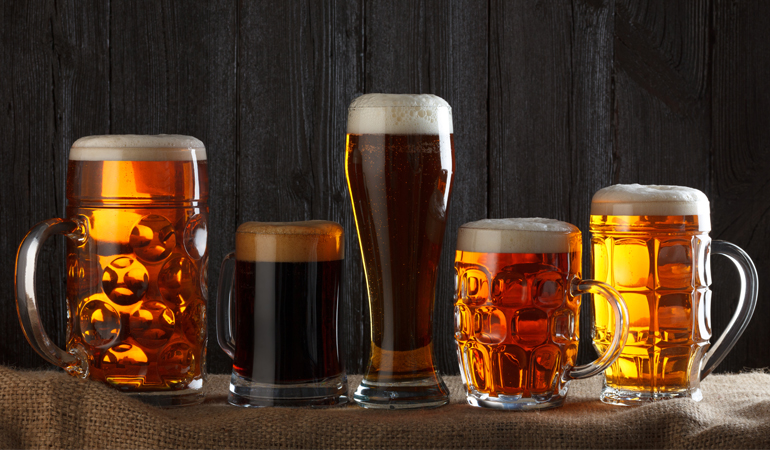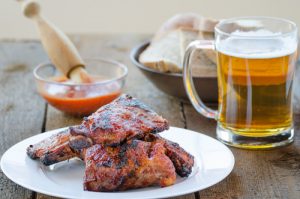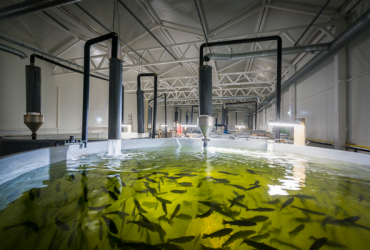
Local and trendy – beer is the new wine
There is a current trend for locally produced products where much of the production is carried out using artisan traditions, with little automation and industrialisation. In connection with this trend, new microbreweries have been popping up in recent years. These produce small quantities of beer and have their own specialities, which has resulted in numerous types of beer now being available, much like with wine. Apart from the taste, what actually characterises good quality beer? We paid a visit to our customer Nydalen Bryggeri & Spiseri in Oslo to learn a little more about beer.There are many different components in beer and they are all involved in determining its colour, foam, smell, taste and aftertaste. Different types of yeast provide taste and aroma; some taste of banana, for example, while others are reminiscent of spices such as pepper and coriander. In light, German wheat beer, yeast is used, which adds banana and clove tones and gives the beer its characteristic taste and smell,” says Jin Jæger, Managing Director of Nydalen Bryggeri & Spiseri.
Viking heritage – did you know…

…the custom of clinking glasses when we drink to each other originates from the Vikings? The beer horns were supposed to be clinked so hard that a little beer splashed over from one tankard to the other. In this way, you could be sure that the beer wasn’t poisoned
.…the Vikings had many types of beer for different occasions, such as dream beer, love beer and Berserker beer? It is suspected that they mixed death cap mushrooms into the latter…
Carbon dioxide important for the taste experience
Nydalen Bryggeri & Spiseri is home to one of Amundsen Bryggeri’s two production sites and has 24 different types of beer on tap in addition to around 160 types of bottled beer. Their maximum capacity per year is approximately 150,000 litres. For this, roughly 1,250 litres of CO₂ are required for carbonating the beer (carbonation is the name of the process in which carbon dioxide (CO₂), is added to a liquid). The right amount of carbon dioxide in beer is also an important factor for the taste experience.
“CO₂ is already produced during fermentation, but as part of the CO₂ is released in a controlled manner from the containers during fermentation, we often have to add extra. Carbon dioxide enriches the taste experience and produces a more refreshing beer, but the right balance is important. Some beers can be fizzy like champagne, while in others, the carbon dioxide is scarcely perceptible. The amount of carbon dioxide in beer varies greatly depending on the type of beer. The light, refreshing beer types require more carbon dioxide than the heavier and stronger kinds. For example, a light lager contains much more carbon dioxide than a strong stout,” explains Jæger.
The addition of carbon dioxide to beer also depends on the temperature of the beer and the CO₂ pressure. The optimum temperature for carbonation is between 0 and 5°C. CO₂ is absorbed more quickly at low temperatures, which means that a higher CO₂ pressure is needed at higher temperatures. Different types of beer foam differently, and many things affect this. The foam on beer consists mainly of proteins originating from the malt that the beer is brewed from. The foam is created by large protein molecules, and when the beer is affected by pumps and filters, for example, these molecules are broken down, making it foam. Therefore, the more the beer is processed, the less foam there is.
12 tips for using beer in food

Beer can be considered a liquid seasoning and it contributes to intensifying the inherent taste of spices and raw materials.
- In contrast to wine, which should in included in the cooking right from the start, beer can be added late in the process. This is because there are bitter substances in beer and the food can acquire a bitter taste if the beer is cooked for too long.
- If you have added too much salt to food, the addition of beer can often repair the damage.
- Beer can be used as an ingredient in soups and sauces.
- Beer is also good for basting meat and grilled dishes, and beef and game are great for marinating in dark types of beer.
- Sweet and fruity beer is recommended in desserts and sweet food; for example, layer cakes can be drizzled with bock beer and pineapple juice
- Dessert sauces and syrups can be made from bock beer or Christmas ale reduced with brown sugar.
- Dark beers go well with bread. Use equal parts water and beer or use it depending on your own taste.
- Use beer instead of stock when cooking sausages.
- Beer in waffles and pancakes makes them airy and crisp.
- Beer is very good for caramelisation.
- Swap balsamic vinegar for beer in salad dressings.
- In chocolate mousse, you can replace a little of the milk with Christmas bock beer or another full-bodied Christmas ale.
Source: Sigrid Strætkvern: “Beer with a knife and fork”
“A good glass of beer should have a good head, but the whole glass should not be filled with foam. There are many reasons for beer to foam too much when drawn from the barrel via a tap. Most often, foaming is due to too high a CO₂ pressure in the barrel or the wrong tap system. Fat also affects the foam quality,” says Jæger.
Storing and serving beer
Beer is a living product and unwanted bacteria, heat, light, air or fat are enemies that can affects its quality. The taste, for example, can become like cardboard; the colour can become dark and the beer can deteriorate more quickly if you are not careful. Beer is a fresh product and should not normally be stored, but beer that has to wait for a while to be drunk should be kept in a dark place at cellar temperature. Some beers tolerate good storage for several years and can at times develop for the better. However, in today’s society it is becoming more usual to keep beer in the fridge. Although is not wrong to consume some beers cold directly from the fridge, when we chill beer this also dampens the beer’s taste nuances: the temperature is important in determining how intensely the aroma and taste of the beer are perceived. A basic rule is that light beer should be served cold and strong beer should be drunk at room temperature. The more complex a beer is in terms of taste, the higher the temperature at which it should be served. It is particularly important to think of the temperature of the beer when beer and food are combined.
Pouring and using the right beer glass
When beer is being poured, we want to appreciate the beer’s aroma in the best possible way. The head is important for preserving the aroma and freshness in the beer. If beer is emptied into the glass too quickly, some of the aroma and the carbon dioxide can be lost; if you let the beer slide down along the edge of the glass, you risk ending up with a beer entirely without a head! Different beers therefore require different ways of pouring,and the type of glass in which the beer is served should also be kept in mind. There are certain concepts behind the appearance and shape of the glass; different beer glasses have been designed to emphasise the beer’s character in terms of foam development, appearance, smell and taste.
Narrow, tall glasses produce more foam. With a tall glass, the beer is applied to the back of the tongue when drinking; the back of the tongue is where the bitterness of the beer is detected. Pilsner is perfect for serving in this type of glass. The narrowing at the top of the glass retains the foam and aroma better and the taste is centred in the mouth when drinking. Thin glasses with a large bell shape and a good opening are superb for more complex beers. Sweetness is best perceived at the front of the mouth, so it is best if the beer can pass through the whole mouth so that you can get an overall impression of the taste. The same rule for wine therefore applies to beer – each beer has own type of glass.
Artistic design
Beer has always been part of various cultures, but it has acquired a completely different status in recent years. Nydalen Bryggeri & Spiseri has an agreement with an artist who designs labels; they are focussing on beer in boxes instead of bottles in future. An airtight and light-protected box provides even better beer quality. “We can confidently say that nowadays, beer is in competition with wine,” concludes Jæger.
By: Unni Bekkevold
Photo: Shutterstock



